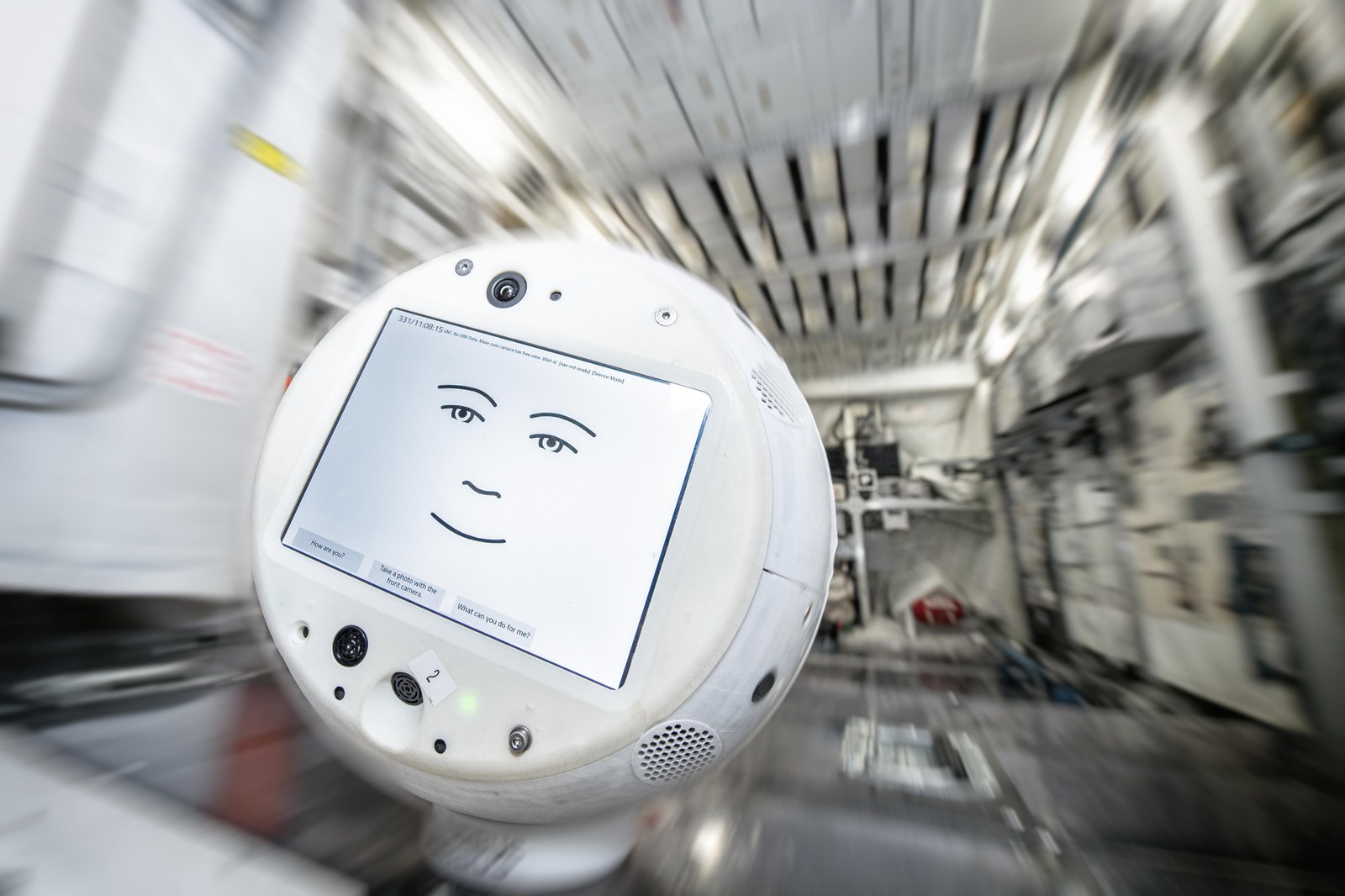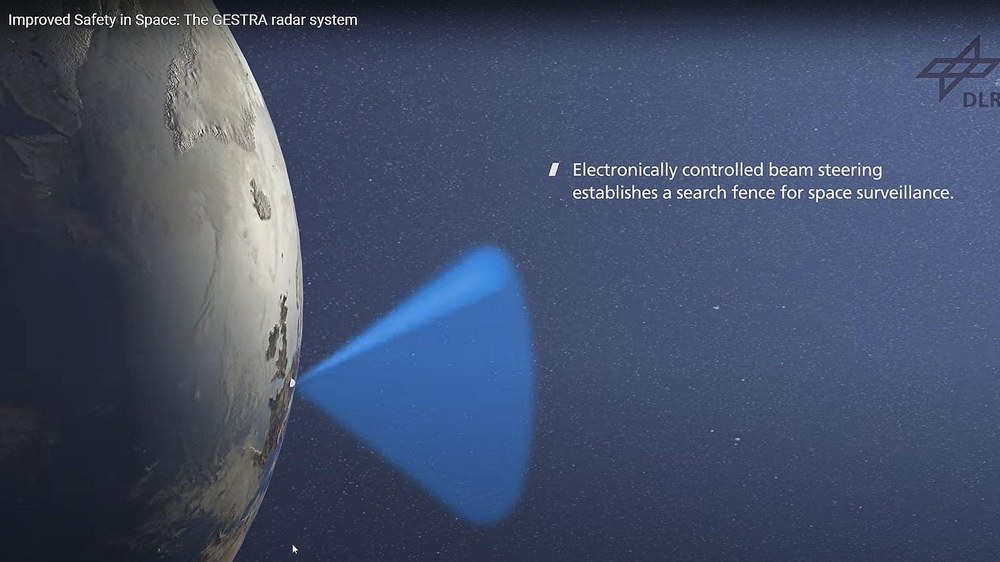International space community meets virtually for the first time at IAC 2020



- The most important international conference for the global space sector will take place in a fully digital form from 12 to 14 October 2020. It will be accompanied by a virtual exhibition.
- It is also the first time that the IAC is open to the general public free of charge.
- As part of the programme, DLR will offer panel discussions with high-profile participants and will be represented with a virtual exhibition stand.
- Online registration: https://iac2020.vfairs.com/en/registration
- Focus: Space, international cooperation
Due to this year's unusual circumstances, the international space community will meet in a purely virtual setting for the first time at the 71st International Astronautical Congress (IAC) from 12 to 14 October 2020. Under the motto ‘Connecting @ll Space People’, the most important international conference for the global space sector will be held virtually, while also being open to the general public free of charge for the first time. The German Aerospace Center (Deutsches Zentrum für Luft- und Raumfahrt; DLR) will present current and future projects and goals of German spaceflight in a new 'cyberspace' format.
The three-day congress will be accompanied by a virtual exhibition, open around the clock, at which DLR will be represented by a virtual stand. An online expert discussion on 'Science for the Future – Earth Observation Technologies in the Age of Climate Change' will take place on 12 October 2020. At 'IAC 2020 – The Cyberspace Edition', DLR will present the following projects from its Space Research and Technology division and the DLR Space Administration:
CIMON - human-machine interaction in space
CIMON (Crew Interactive MObile companioN) is the world’s first free-flying, autonomous astronaut assistant equipped with artificial intelligence. It was first deployed on board the International Space Station (ISS) during European astronaut Alexander Gerst’s 2018 ‘horizons’ mission. Its updated successor, CIMON-2, also demonstrated its functionality during its interaction with European astronaut Luca Parmitano on the ISS in spring 2020. CIMON is a pioneering project for the use of AI in human spaceflight developed by the DLR Space Administration in cooperation with Airbus and IBM.
MERLIN – the Franco-German climate mission
Merlin is a sorcerer in the Arthurian legend of the Knights of the Round Table and the search for the Holy Grail. Methane is a major greenhouse gas and the Franco-German small satellite MERLIN (MEthane Remote sensing LIdar missioN), a contemporary successor and namesake of the legendary magician, will detect the gas across the globe. From 2024, it will detect and monitor methane in the atmosphere from an altitude of approximately 500 kilometres. Under the leadership of the DLR Space Administration and the French space agency, CENS, one of the aims of the three-year mission is to produce a global map of methane concentrations. MERLIN will also help to identify the regions of the world where methane is introduced into the atmosphere and where it is removed.
GESTRA – unique space radar tracking space debris
The German Experimental Space Surveillance and Tracking Radar (GESTRA) system is one of the most modern radar systems for detecting objects in space. This unique system can monitor space debris and active space systems in low-Earth orbits around the clock. GESTRA was built by the Fraunhofer Institute for High-Frequency Physics and Radar Technology (FHR) on behalf of the DLR Space Administration with funding from the BMWi. It will soon enter operation from the FHR site near Koblenz. GESTRA will make a significant contribution to space security at national, European and international levels.

Improved Safety in Space: The GESTRA radar system
Your consent to the storage of data ('cookies') is required for the playback of this video on Youtube.com. You can view and change your current data storage settings at any time under privacy.
Reusable space transportation systems
Reducing the cost of space transportation, while simultaneously improving the environmental impact of space activities, is crucial for maintaining Europe’s ability to sustainably compete in the global marketplace. But this can only be achieved with a fundamental change in launcher architecture, with reusability as the most important consideration. In particular, the reuse of the first stage of a launcher, which accounts for a significant proportion of the costs, promises large savings – potentially in the double-digit percentage range. DLR is investigating and testing two concepts – Cooperative Action Leading to Launcher Innovation in Stage Toss back Operations (CALLISTO) and Reusability Flight Experiment (ReFEx).
CALLISTO is a reusable demonstrator for a vertical take-off and vertical landing (VTVL) rocket stage. The German-French-Japanese project being conducted by DLR, CNES and JAXA aims to improve the knowledge of VTVL rocket stages and to demonstrate the capabilities and technologies required to develop and market a reusable VTVL rocket stage. The CALLISTO spacecraft consists of a rocket stage powered by liquid oxygen and hydrogen. The propulsion system can be throttled down for a precise and soft landing.
In parallel, DLR is pursuing the ReFEx project to investigate a different approach to reusable launch vehicles and re-entry technologies. Instead of a vertical landing, the project is exploring the possibility of landing a first-stage launcher horizontally using autonomous navigation and flight guidance in every phase of its mission. The demonstration flight is planned for 2022.
Global change – urbanisation
For the last few years, and for the first time in history, more people are living in cities than in the countryside; and the urbanisation trend is continuing. Within a short time, megacities have begun to sprawl, forming extensive urban landscapes and urbanising entire regions. How can the opportunities offered by urbanisation be sensibly exploited? How can the negative side effects of rapid growth be mitigated or even avoided?
Finding answers to these questions is one of the central societal challenges of the coming decades. With the help of Earth observation technologies, DLR provides data for sustainable development. Detailed observations and surveying of settlement areas is of central importance for this. The Global Urban Footprint (GUF) project, for example, aims to map populated areas worldwide with a currently unparalleled spatial resolution of 0.4 arcseconds (approximately 12 metres).
Rover technologies for the Moon and Mars
In its development of rover technologies, DLR is focusing on autonomous, rough-terrain rovers. In the future, they should be able to cover as long distances as possible on their own. In future, rovers such as that of the Japanese Martian Moons eXploration (MMX) mission, which is being developed jointly by DLR, JAXA and CNES and scheduled for launch in 2024, will be able to independently cover long distances. The MMX rover is scheduled to land on the Martian moon Phobos in late 2026 or early 2027. The mobile landing robot is being designed and built under the joint leadership of DLR and CNES and will explore the surface of Phobos for around 100 days. With the MMX mission, JAXA, CNES and DLR continue their long-standing and successful cooperation.
About the IAC
Since 1951, the International Astronautical Congress (IAC) has brought together space stakeholders from all over the world at a single location every year to enable them to engage in intensive dialogue and exchange. Each year, the event attracts more than 6000 participants from space agencies, companies, research institutions, universities, scientific associations, federations, institutes, and museums from all over the world. In 2020, the congress will take place entirely virtually for the first time.
The IAC covers all space-related topics and offers guests the latest information on developments in space science and industry as well as networking opportunities, contacts, and potential partnerships. Each year, the IAC changes the host country and its central theme. The IAC is hosted by the International Astronautical Federation (IAF), the world's largest space advocacy body.
